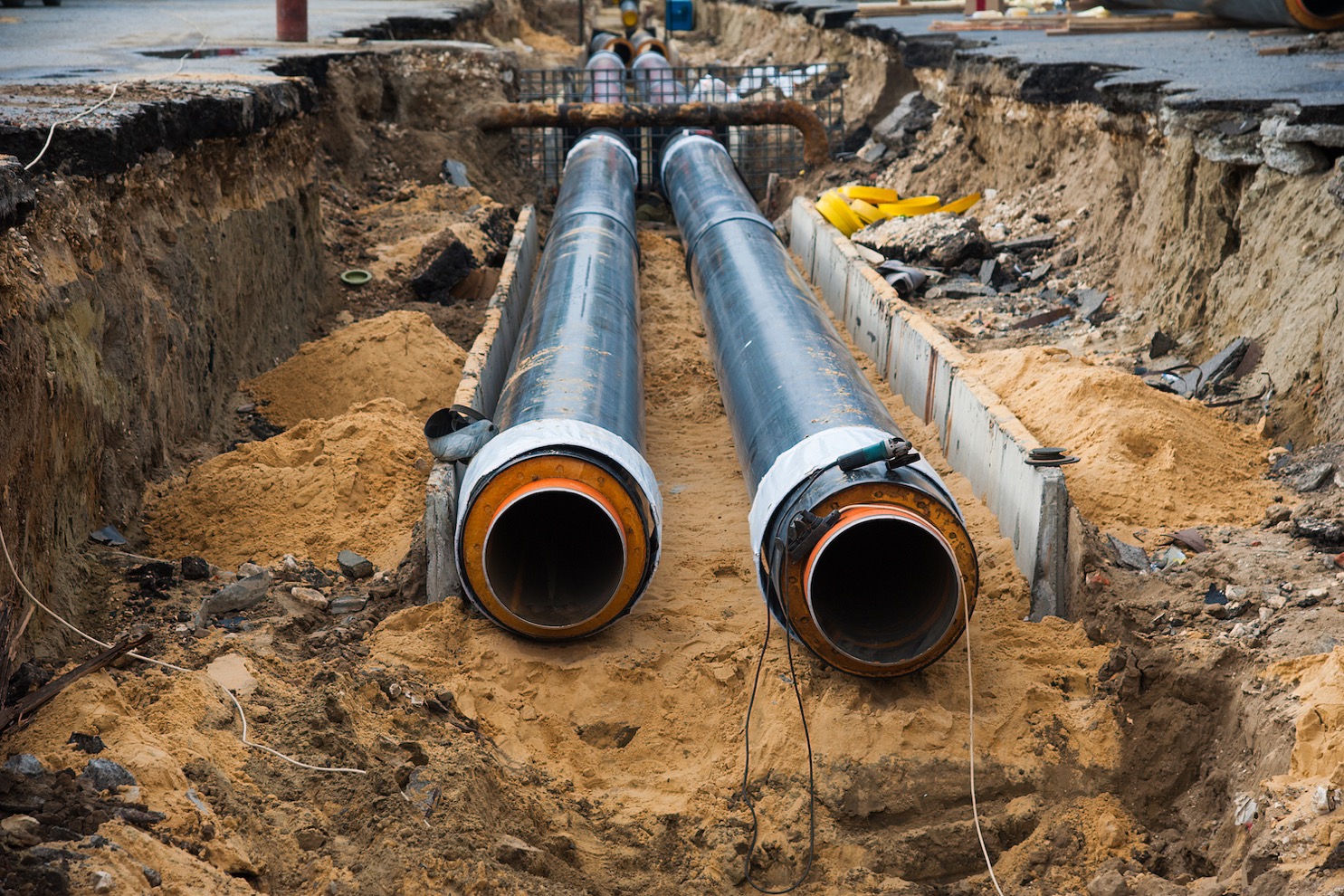
Pipeline Preservation
THE PROBLEM
Underground pipelines are required to have cathodic protection to protect them from corrosion. When these pipelines run under roadways, railway lines, etc. they have historically been required to have protective metal casings. Over time, there may be movement of the product carrying the inner pipeline (“carrier pipe”) and/or the casing that brings the carrier and casing into contact. This results in a “metallic short” that causes the cathodic protection current to pass through the casing.
Pipeline Preservation
For more information,
The Solution
Zerust Oil & Gas, a world leader in corrosion management with over 50 years of experience, has unique solutions to mitigate corrosion inside pipelines prior to construction or downtime using Zerust’s Vapor Corrosion Inhibitors or VCIs.
Zerust Oil & Gas has several cost-effective options using VCIs for protecting these pipe lengths during pre-construction, pre-commissioning, or during mothballing, layup or abandonment.
- Preservation of Pipe Lengths
- Pipeline Preservation Post Hydrotesting
- Non-Commissioned Pipeline Corrosion Protection - Misting Pig
- Anti-Corrosion for Pipeline Layup by Liquid Injection
Do you have a pipeline in the pre-construction or pre-commissioning stage for which you need anti-corrosion solutions?
Contact us for your corrosion management needs at [email protected].
Preservation of Pipe Lengths
For the protection of pipe lengths, Zerust has effective and economical protection options using Vapor Corrosion Inhibitors or VCIs. During transportation or when pipe lengths are staged along the pipeline construction route, sachets of Zerust Vapor Corrosion Inhibitors or VCI, are inserted into the pipe length and the ends are sealed. The sachets also contain Soluble Corrosion Inhibitors, or SCI, that protect from the water that may form from condensation because of thermocycling.
The area on the pipe at the very end where the coating has been removed is called the “cut back”. It is imperative to protect the cutback area and the bare beveled area at the pipe ends where the weld joint is made. Zerust’s Inhibitor Fusion Tape, also known as ZIF Tape, can be used over the external cut-back area for protection.
VCIs have a vapor pressure higher than air and VCI molecules are released from the sachet and fill the pipe; adsorbing onto bare metal surfaces of even the most complex geometries to provide protection against corrosion. The length and diameter of the pipe segment will determine the number of VCI sachets that will need to be used to provide corrosion protection.
The VCI sachets are secured by a string to the end cap and can be pulled out automatically when the pipe segment is ready to use. Corrosion can affect pipe lengths in the pre-construction phase. Using this simple application, pipe lengths can be protected from internal corrosion for a period of several months or even years.
There are several cost-effective options for protecting these pipes during the pre-construction and pre-commissioning phases us-ing VCIs.
Pipeline Preservation Post Hydrotesting
Once a pipeline has been assembled and hydro-tested, Zerust has a unique application that can protect pipelines from internal corrosion until the pipeline is commissioned. This process can eliminate the need for dry air or a Nitrogen purge.
Zerust’s unique blend of Zerion Inhibitors is first mixed with water. The inhibitor slurry is then pumped between two pigs. The lead pig is typically a wiper pig, and the trailing pig is a filming pig which will leave a thin layer of the VCI slurry on the surface of the pipeline.
Soluble Corrosion Inhibitors or SCI in the slurry will neutralize contaminants on the steel surface upon contact. Volatile Corrosion Inhibitors will evolve from the slurry to provide continuing protection to the entire internal surface. Compressed air is typically used to push the pigs and neither dried air nor Nitrogen is required at any point in the process. The surface area of the pipe is in contact with the slurry which then sheds to the 6 o’clock position of the pipe. The surface comes into direct contact with the SCIs in the chemistry. The inhibitors will neutralize moisture and acidic species. Vapor molecules volatize into the annulus of the pipe and ad-sorb onto the steel surface. As the pigs move, the inhibitor slurry is deposited as a thin film on the internal surfaces of the pipeline and the SCI is in direct contact with the entire metal surface area of the pipe interior.
VCI molecules are released that protect the bare metal surfaces. The inhibitor molecules fill the pipeline as well as any gaps due to valves, ports, and instrumentation. Excess slurry drains to the bottom of the pipeline. Corrosion inhibitor particles remain even when water flows to low points in the pipe, still releasing VCI molecules. In the event of any water ingress, the inhibitor will neutralize corrosive contaminants.
Long lengths of piggable pipelines can be protected using this method. Zerust has successfully implemented this solution on significant pipeline lengths.
Hydrostatic Testing of Vessels & Pipelines
Hydrostatic testing, involving pressurizing vessels or pipelines with water, is crucial for ensuring safety and durability. However, residual hydrotest water can lead to corrosion, posing a risk to the asset's integrity. Zerust offers a diverse range of products, including Soluble Corrosion Inhibitors (SCI's), Vapor Corrosion Inhibitors (VCI's), Chelating agents, and pH buffering agents, addressing various corrosion risks. Tailored solutions consider factors like asset geometry, configurations, service life requirements, and compliance with regulations. Zerust's hydrotesting formulations not only prevent flash corrosion but also enhance gas pipeline integrity, reducing iron oxide formation and optimizing odorant bloom times, resulting in significant cost savings for asset owners.
Non-Commissioned Pipeline Corrosion Protection - Misting
Once a pipeline has been assembled and hydro-tested, Zerust has a unique application that can protect pipelines from internal corrosion until the pipeline is commissioned. Zerust’s unique blend of Zerion Inhibitors is first mixed with water. In some cases, a vacuum truck may be used to mix the Zerust inhibitor with water.
The Zerust inhibitor slurry is then pumped into a pig launcher adjacent to the pipeline and is injected between a lead pig and a filming pig. Typically, compressed air is used to push the pigs through the pipeline. As the pigs move, the inhibitor slurry is misted, creating a thin film on the internal surfaces of the pipeline, and the Soluble Corrosion Inhibitors or SCI are in direct contact with the entire metal surface of the pipe interior and will neutralize corrosive contaminants on the surface of the steel.
VCI molecules are released that protect the bare metal surfaces. The inhibitor molecules fill the pipeline as well as any gaps due to valves, ports, and instrumentation. Corrosion inhibitor particles remain even when the water evaporates, still releasing VCI molecules. In the event of any water ingress, the inhibitor will neutralize corrosive contaminants. SCI will neutralize the surface of the steel and the pH balancing of the chemistry.
Long lengths of piggable pipelines can be protected using this method. The sealed pipe section will remain protected for several years.
Zerust has successfully implemented this solution on significant pipeline lengths.
Anti-Corrosion for Pipeline Layup by Liquid Injection
The low-lying area of pipeline segments that are non-piggable are susceptible to collecting residual water which can lead to corrosion.
Zerust Oil & Gas has a liquid inhibitor injection procedure for a layup. Zerust’s unique blend of Zerion Inhibitors is first mixed with water. In some cases, a vacuum truck may be used to mix the Zerust inhibitor with water.
The inhibitor slurry is then pumped into ports in the higher elevations of the pipeline and allowed to flow to the lower elevations by gravity. Standing water is treated with Soluble Corrosion Inhibitors, or SCI, slurry, and neutralized.
VCI evolves from the slurry and neutralizes contaminant molecules in the atmosphere and on the steel surface.
SCI will neutralize the pH balance of the standing water at the bottom of the pipeline.
The VCIs will volatize to provide continual protection of the annulus of the pipe until it is commissioned and begins service.
Zerust has over 50 years of experience and has completed numerous projects.
Zerust Inhibitor Fusion (ZIF) Tape for CUI
HISTORICAL DATA SHOWS THAT ABOUT 60% OF PIPE LEAKS ARE CAUSED BY CORROSION UNDER INSULATION (CUI).
The Problem
Corrosion Under Insulation (CUI) is one of the (petro) chemical processing industries’ worst problems and the costs associated with mitigating it is astronomical. CUI is any type of corrosion that occurs due to a moisture buildup on the external surface of insulated equipment. If undetected, the results of CUI can lead to the shutdown of a processing unit or an entire facility, and in rare cases, it may lead to a process safety incident. While carbon and low-alloy steels operating between –4°C and 149°C are most at risk from CUI, the intermittent boiling and flashing that occurs above a metal temperature of 100°C (212°F) produces an aggressive CUI environment. CUI is one of the most difficult processes to prevent. The reason for that is, by and large, no matter the precautions taken, water invariably seeps into the insulation and begins its dirty work - sometimes unseen until process leakage occurs.
The Solution
Zerust has developed the unique Zerust Inhibitor Fusion (ZIF) tape using the proven platform of high temperature self-fusing silicone tapes to deliver corrosion inhibitors to the surface of the pipe lengths under insulation. The ZIF tape is simply wrapped over the pipe to be protected, over the existing coating, prior to the installation of the thermal insulation. Once installed, the inhibitors are most effective when there is moisture present and therefore mitigate corrosion caused by condensation and high-temperature flashing. The unique inhibitors are effective at temperatures up to 200°C. When moisture evaporates as the pipeline temperatures rise, the inhibitor is released to be redeposited under the silicone tape and in contact with the pipeline where it is dormant until the temperatures drop and moisture re-condenses.

